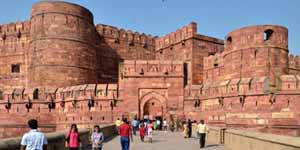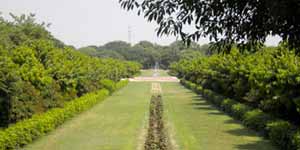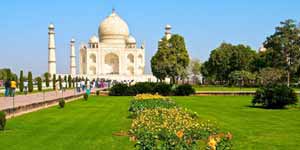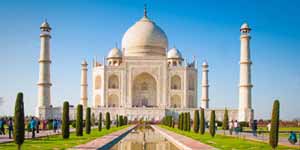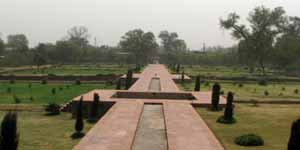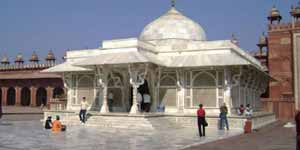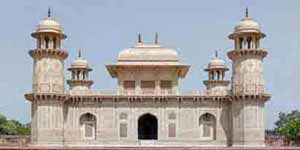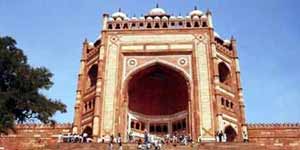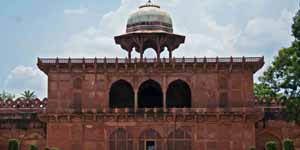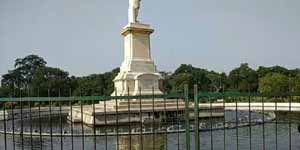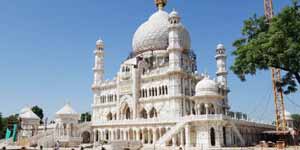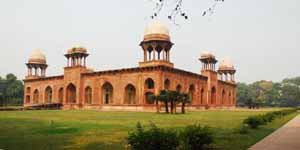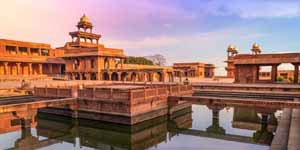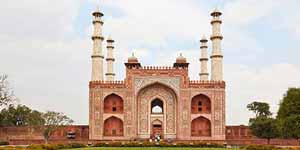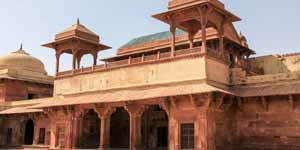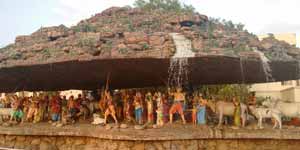

Mathura serves as an important religious and cultural site for the Hindus. Known as the town where Lord Krishna was born, a large number of devotees flock towards here to visit the temples and shrines and attain some sort of enlightenment. Located just 150 kilometers away from New Delhi, this place is also well connected by road to other nearby cities such as Agra.
There is a host of temples in the city and 25 Ghats across the holy Yamuna River which runs through Mathura. Many people are seen taking the holy dip at dawn on the Yamuna River and in the evening too the scene gets even more majestic and fascinating as during the evening aarti occasion hundreds of candles are set floating onto the sacred Yamuna. History bears testimony of the fact that once it was a Buddhist centre having 20 monasteries that accommodated 3000 monks but after the advent of Hinduism, it was Hinduism all the way.
Shri Krishna Janmabhumi is the most popular site in Mathura and is believed to be the birthplace of Lord Krishna. There is a massive temple situated here, devoted to Lord Krishna and Radha. The prison where he was said to be born is open for tourists to visit. There are also various other temples dedicated to Lord Krishna here, some of the famous ones being the Dwarkadheesh Temple and the Gita Mandir. The Dwarkadheesh temple is especially famous for the grand celebration it conducts during the festivals of Holi and Janmashtami. The walls of the Gita Mandir have verses from the Bhagavad Gita inscribed upon them. It is recommended that one tour the city, especially via walking. This allows one to experience the old architecture as well as the rapid urbanization while enjoying the delicious local street foods.
History
The origin of Mathura is ancient. It is said to be the birthplace of Lord Krishna, the popular incarnation of Lord Vishnu. Mathura and the area around it, including Vrindavan, are linked with the childhood exploits of Lord Krishna. It is mentioned in the ancient Indian epic of Mahabharata. It later became a part of the Mauryan Empire. King Ashok, the great Mauryan ruler, built a number of Buddhist monuments in and around Mathura in the third century BC. Between first century BC and first century AD, Mathura was the center for arts. The sculpture making and stone carving styles of this period are referred to as belonging to the Mathura School of Art.
The main theme of these sculptures was inspired by the life of Lord Buddha. The decline of Buddhism in this region following the decline of the Mauryan Empire saw the rise of Hindu influence. However, in the 11th century AD, Mahmud Ghazni destroyed a large number of Buddhist and Hindu shrines. In the 15th century, Sikandar Lodhi, one of the Sultans from Delhi, continued the pillage of this city. The last great Mughal ruler and a fanatic Muslim, Aurangzeb flattened the Kesava Deo temple and a built a mosque here. The Afghani marauder Ahmed Shah Abdali dealt the final blow in 1757, when he torched the city. It came under British rule in 1804.
